|
Panicle formation is the change from a vegetative apical meristem to a reproductive apical meristem. A panicle is where "all inflorescences in which the spikelets are not borne on the main axis but occur on branches." (Jones, 1985; pg. 92) Some observeable panicle characteristics are the panicle type, the secondary branching of the panicle, the panicle axis and the panicle exsertion. For more information on the vegetative stage of the stem, see the external anatomy page. The panicle type refers to their mode of branching, the angle of the primary branches and the spikelet density. It can be simplified into three categories, compact, intermediate and open. Crop breeders usually selectively breed for a compact panicle type, open panicle type is actively selected against, for reasons of maximizing crop grain production and harvest. See the diagram below for a visual reference of the panicle type. 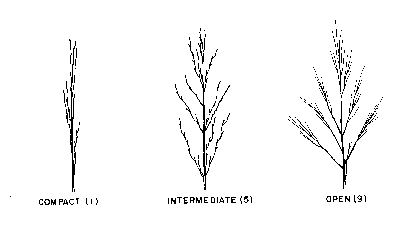 The change of the vegetatiove meristem to the reproductive meristem involves the increased divisions of the cells in the quiescent center of the shoot apical meristem. The meristem goes through a period of cell enlargement and elongation. This growth increases the stem length, and causes the panicle to be exserted out into the air above the surrounding leaf sheaths. The meristem is no longer producing leaf primordia, instead it is developing small swellings which will initiate panicle branching. Panicle branches are where the spikelets will develop. Panicle branches can also secondarily branch, producing secondary branches. The types of secondary branching are absent, light, heavy and clustering. See the diagram below for examples of secondary branching. 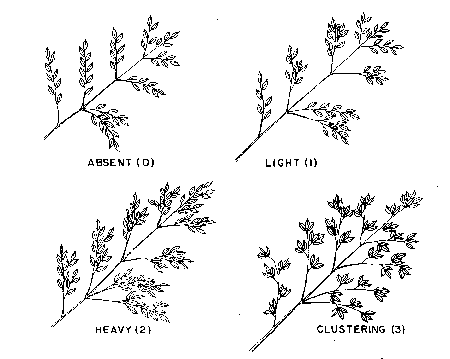 The panicle axis is a simple visual analysis of the panicle position. It has been described as either straight or droopy. The analysis of the panicle axis is a visual evaluation of the panicle at maturity. 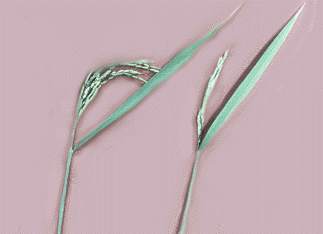 Panicle exsertion, is the "exsertion of the panicle
above the flag leaf sheath after anthesis." (IBPGR-IRRI Advisory Committee,
1980; pg. 13) By comparison, the vegetative shoot apical meristem is very
small, usually completely hidden within the leaf sheaths. The panicle
exsertion can be classified as well exserted, moderately well exserted,
just exserted, partly exserted or enclosed. Examples of these categories
are shown below in the diagram.
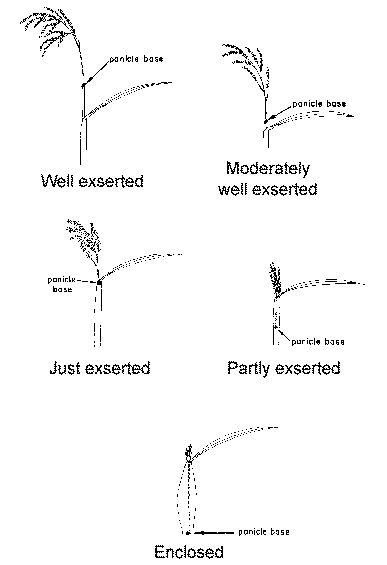 Panicle development occurs in the acropetal direction for the primary branches. However, the terminal spikelet matures first which is basipetal development. In the vegetative stem, the pith is absent at maturity, the mature reproductive stem, the panicle, retains the pith cells. This difference can easily be noticed when examining sections of the stem from above and below the panicle initiation point. 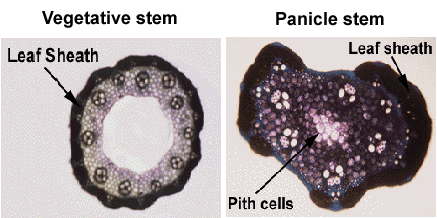
|